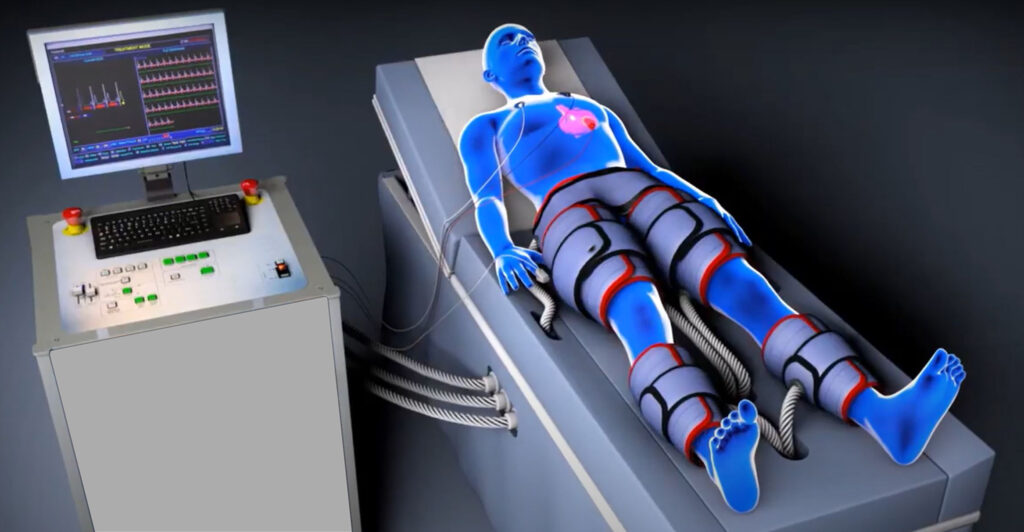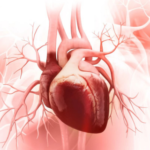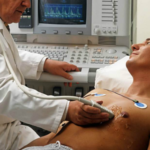
In the realm of cardiovascular health, medical advancements continue to play a pivotal role in reshaping the landscape of treatment options. One such groundbreaking therapy that has garnered attention for its effectiveness in managing heart diseases is Enhanced External Counterpulsation (EECP). In this comprehensive exploration, we delve into the multifaceted benefits of EECP therapy and its potential to revolutionize cardiovascular care.
Understanding EECP:
EECP therapy is a non-invasive, outpatient treatment that involves the use of inflatable cuffs wrapped around the lower limbs. These cuffs are synchronized with the cardiac cycle to enhance blood flow to the coronary arteries. The treatment works by creating a counterpulsation effect – inflating the cuffs during diastole (the resting phase of the heart) and deflating them during systole (the contraction phase). This synchronized process enhances blood flow to the coronary arteries, improving oxygen supply to the heart muscle.
Benefits of EECP Therapy:
- Improved Blood Flow and Oxygenation: One of the primary benefits of EECP therapy is its ability to significantly improve blood flow and oxygenation to the heart muscle. By enhancing coronary perfusion, EECP helps alleviate symptoms of angina, reducing the frequency and intensity of chest pain in patients with coronary artery disease.
- Angina Relief and Symptom Management: EECP therapy has demonstrated remarkable efficacy in relieving angina symptoms, making it a valuable option for individuals who experience chest pain due to reduced blood flow to the heart. This reduction in angina symptoms contributes to an enhanced quality of life for patients.
- Stimulation of Collateral Blood Vessels: EECP therapy promotes the formation of collateral blood vessels, which act as natural bypasses to improve blood circulation around blocked arteries. This collateral development can enhance the overall resilience of the cardiovascular system, providing alternative pathways for blood to reach the heart muscle.
- Reduction in Ischemia: Ischemia, a condition characterized by inadequate blood supply to the heart muscle, can lead to serious complications. EECP therapy has been shown to reduce ischemia by enhancing blood flow, potentially preventing the progression of heart diseases and minimizing the risk of adverse events.
- Enhanced Exercise Tolerance: Patients undergoing EECP therapy often experience an improvement in exercise tolerance. This is attributed to the increased oxygen delivery to the heart, allowing individuals to engage in physical activities with reduced discomfort and fatigue.
- Non-Invasiveness and Minimal Side Effects: Unlike invasive procedures such as angioplasty or bypass surgery, EECP therapy is non-invasive and is associated with minimal side effects. This makes it an attractive option for individuals who may not be suitable candidates for surgical interventions or those seeking alternatives to traditional treatments.
- Post-Cardiac Event Rehabilitation: EECP therapy has shown promise in post-cardiac event rehabilitation, aiding patients in recovering and regaining cardiovascular health after a heart attack or other cardiac events. Its non-invasive nature makes it a viable option for individuals in various stages of cardiac rehabilitation.
- Cost-Effective Treatment Option: In comparison to certain invasive cardiac procedures, EECP therapy is considered a cost-effective alternative. This can make it more accessible to a broader range of patients, addressing economic barriers to advanced cardiovascular care.
- Long-Term Cardiovascular Health Maintenance: EECP therapy not only addresses immediate symptoms but also contributes to long-term cardiovascular health maintenance. The improvement in blood flow, stimulation of collateral vessels, and reduction in ischemia collectively work towards preserving heart function and preventing the progression of heart diseases.
- Patient Convenience and Comfort: EECP therapy is conducted on an outpatient basis, allowing patients to receive treatment without the need for hospitalization. The comfortable nature of the procedure, coupled with its non-invasive characteristics, enhances patient compliance and satisfaction.
Dr. Rahul Gupta and Cardium’s Contribution:
At the forefront of advancing EECP therapy in India is Dr. Rahul Gupta, a distinguished cardiovascular specialist committed to bringing innovative solutions to heart care. Dr. Gupta’s expertise, coupled with the cutting-edge facilities provided by Cardium (https://www.cardium.in/), has significantly contributed to the widespread adoption of EECP therapy as a reliable option for managing heart diseases.
Cardium’s state-of-the-art facilities offer patients a conducive environment for receiving EECP therapy under the guidance of skilled healthcare professionals. The combination of Dr. Gupta’s expertise and Cardium’s commitment to excellence has positioned EECP therapy as a key component in their comprehensive approach to cardiovascular care.
Conclusion:
In conclusion, the benefits of Enhanced External Counterpulsation therapy for heart diseases are vast and encompass improvements in blood flow, relief from angina symptoms, collateral vessel stimulation, and long-term cardiovascular health maintenance. The non-invasive nature of EECP therapy, coupled with its minimal side effects, makes it an attractive option for individuals seeking alternatives to traditional treatments.
Dr. Rahul Gupta’s dedication to advancing cardiovascular care, along with Cardium’s state-of-the-art facilities, underscores the transformative potential of EECP therapy. As we continue to unravel the complexities of cardiovascular health, EECP therapy stands out as a beacon of hope, offering a promising avenue for individuals looking to enhance their heart health and overall well-being.




